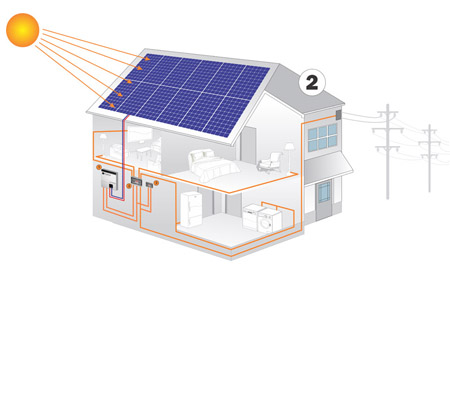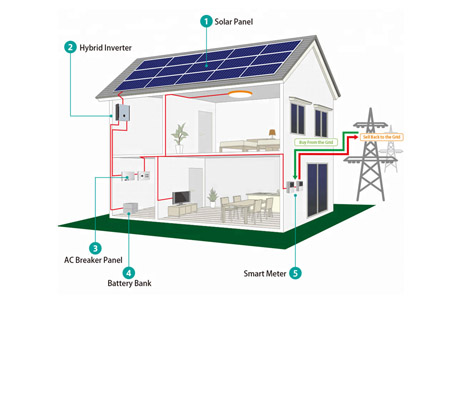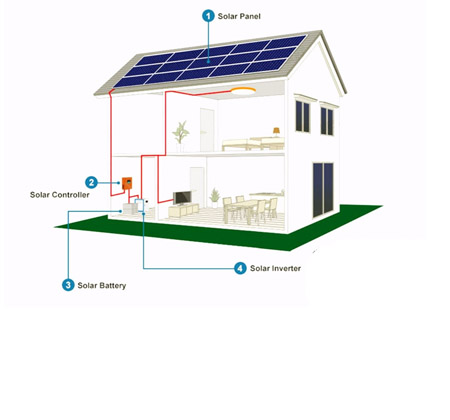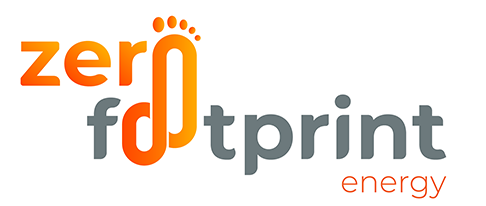Solar Power (PhotoVoltaic)
ProductsSOLAR POWER INTRODUCTION
With rising energy costs and not knowing what is going to happen with Eskom, consumers are exploring different options and solutions as to how they can save on their monthly electricity usage and to generate their own power.
This can be a very confusing exercise for customers, as every supplier and installer will have their own system of choice and most of the time customers will get confused and probably misinformed as to how a PV system works.
A PV system consists of solar panels mounted onto your roof with special mounting brackets designed for your roof, cabling , protection and an inverter to convert the solar panels' DC power into AC power for use in your home. Should you want to use the sun power when the sun is not shining (or as backup during power outages) an MPPT charge controller plus batteries are required to store energy.
This can be a very confusing exercise for customers, as every supplier and installer will have their own system of choice and most of the time customers will get confused and probably misinformed as to how a PV system works.
A PV system consists of solar panels mounted onto your roof with special mounting brackets designed for your roof, cabling , protection and an inverter to convert the solar panels' DC power into AC power for use in your home. Should you want to use the sun power when the sun is not shining (or as backup during power outages) an MPPT charge controller plus batteries are required to store energy.
BENEFITS OF GOING SOLAR
1. You will start saving from day one
2. It will increase the value of your property
3. Solar is an investment
4. You are creating a safer environment
5. Solar power gives you control over the rising energy costs and unstable energy grid
NEEDS ANALYSIS
When considering a PV solution, it is important to know what your power usage is. A lot of companies will ask for your electricity bill and send you a quote, but it's not that easy. Zero Footprint Energy will not just send a client a quote. We will do a full needs analysis including a site assessment and installation of an energy meter for a time period to monitor the electricity usage. When doing the needs analysis and monitoring we look for the following:-
Roof type
-
Roof angle, direction and size
-
Single or double storey house?
-
Any trees or big obstacles casting shade over the roof
-
Size of main breaker
-
Is there a need to split or rewire the DB board?
-
Is there enough space in the DB board?
-
Where is the optimal space to install the system (inverter, MPPT's, batteries)?
-
What is your kWh usage during the day-time and night-time?
-
What is your highest peak demand usage? This will establish what size inverter you require
-
How many hours of back-up do you require should you want battery storage?
There are three main types of systems we can then suggest:



